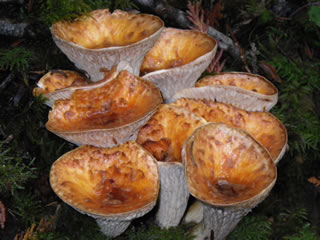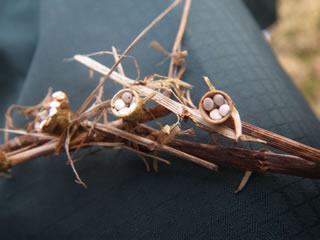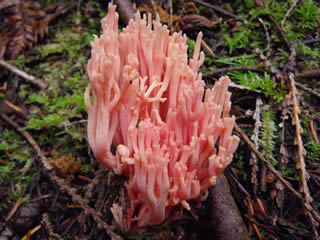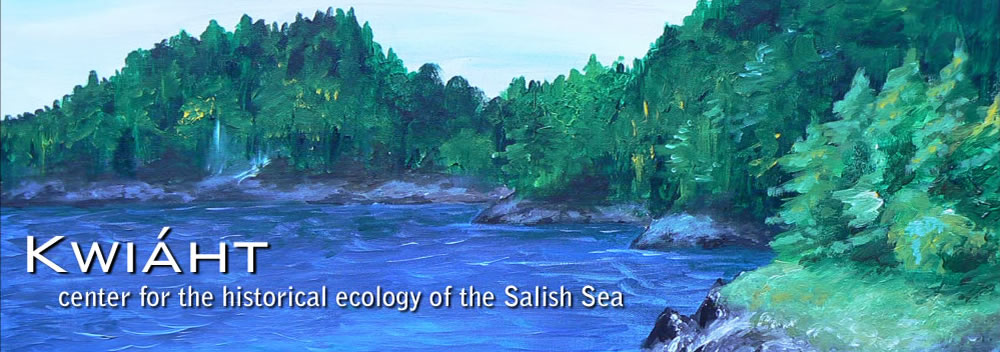Native Flowering Plants and Fungi

Scaly chanterelles Mountain Lake
Plant communities provide the substrate for terrestrial ecosystems, providing nutrients and shelter for animals. Plants rely in turn on fungi, bacteria, and tiny soil arthropods to collect and reprocess nutrients. Mushrooms—the fruiting bodies of some fungi—are the most easily observable manifestation of this essential soil community.
Mycorrhizal fungi are essential partners of trees and, in less disturbed woodlands of the islands where they produce spectacular flushes of colorful mushrooms every few years, prized not only by human gourmets but by native flies, chipmunks, flying squirrels, and other small mammals.

Blue eyed grass, Iceberg Point
Plants are relatively easy to monitor for changes in diversity, distribution, abundance, and behavior (times of emergence, flowering, and dormancy, for example). Monitoring plant communities is consequently a convenient way of detecting the effects of climate change and human activity on ecosystems as a whole. Plants and soils are also clues to landscape history and pre-Contact changes in land use.
Plants were relatively well inventoried by Scott Atkinson and Fred Sharpe, Wild Plants of the San Juan Islands, in the 1970s. Kwiáht continues to add new species and locations to that foundational inventory. You can download our preliminary species lists here.

Birds Nest Fungus
San Juan Islands plant communities began assembling barely 9,000 years ago, as glacial ice sheets melted, and isostatic rebound from glacial loading thrust the highest points of the islands above rising seas. Winds, currents, and birds re-seeded the islands. Evidence of early human activity (such as Cascade Phase projectile points) suggests that visiting humans were also an important factor in the assembly of post-glacial plant communities for more than 7,000 years.
Many native plant species that are widespread on mainland Washington and Vancouver Island are absent in the islands, or restricted to deliberate plantings such as gardens and, ironically, "habitat restoration" projects that do not respect or protect the islands' unique plant communities, but simply import planting stocks from the mainland.

Coral fungus, Mountain Lake
Island ecosystems also preserve many plant species that have disappeared from mainland habitats because of competition, changing physical conditions, or human disturbance; and include unusual genotypes and species assemblages not found elsewhere. An interesting example is the combination of Western Buttercup and California Buttercup (Ranunculus occidentalis and californicus), including many hybrid crosses, on southern Lopez Island.
Kwiáht continues to map and monitor a wide variety of plant and fungal communities in the San Juan Islands, with a focus on locally rare and ethnobotanically important species, and to investigate genetic isolation and unique genotypes, especially on uninhabited islets that have remained relatively undisturbed by humans.

Paintbrush, Kellet Bluff
See also:
Consortium of Pacific Northwest herbaria
